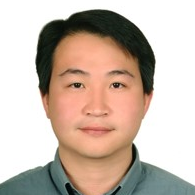Heat and Mass Transfer: Fundamentals and Applications in Thermal Energy
A special issue of Applied Sciences (ISSN 2076-3417). This special issue belongs to the section "Energy Science and Technology".
Deadline for manuscript submissions: closed (31 December 2019) | Viewed by 50850
Special Issue Editors
Interests: slope stability; numerical methods; groundwater modeling; hydrogeology; geotechnical analysis; geographic information systems
Special Issues, Collections and Topics in MDPI journals
Interests: fluid mechanics; modeling and simulation; computational fluid dynamics; numerical simulation
Special Issues, Collections and Topics in MDPI journals
Special Issue Information
Dear Colleagues,
Heat and mass transfer generally covers a wide variety of engineering disciplines concerning theoretical research, fundamental studies, mathematical modeling, numerical simulations, and experimental investigations relating to any kind of current and emerging topics in heat and mass transfer in equipment, systems, processes, materials, and related objects.
This Special Issue welcomes high-quality submissions that, through theory and/or simulation, seek to advance the understanding of “heat and mass transfer: fundamentals and applications in thermal energy”. It focuses on both analytical and experimental research, with an emphasis on contributions which increase the basic understanding of heat and mass transfer processes in porous materials and their application to engineering problems. The scope of the Special Issue includes, but is not limited to the following subjects:
- Analytical methods for solving problems of heat and mass transfer;
- Computational techniques in conduction, convection, and radiation teat transfer;
- Mesh reduction methods (including boundary element methods, method of fundamental solutions, Trefftz method, general finite difference method, and radial basis function method) for modeling the behavior of heat and mass transfer;
- Inverse problems in heat and mass transfer;
- Heat and mass transfer in porous materials;
- Fluid flow and transfer in porous media;
- Applications of heat and mass transfer in engineering;
- Other topics on transport phenomena in porous media.
Prof. Dr. Cheng-Yu Ku
Prof. Dr. Chia-Ming Fan
Guest Editors
Manuscript Submission Information
Manuscripts should be submitted online at www.mdpi.com by registering and logging in to this website. Once you are registered, click here to go to the submission form. Manuscripts can be submitted until the deadline. All submissions that pass pre-check are peer-reviewed. Accepted papers will be published continuously in the journal (as soon as accepted) and will be listed together on the special issue website. Research articles, review articles as well as short communications are invited. For planned papers, a title and short abstract (about 100 words) can be sent to the Editorial Office for announcement on this website.
Submitted manuscripts should not have been published previously, nor be under consideration for publication elsewhere (except conference proceedings papers). All manuscripts are thoroughly refereed through a single-blind peer-review process. A guide for authors and other relevant information for submission of manuscripts is available on the Instructions for Authors page. Applied Sciences is an international peer-reviewed open access semimonthly journal published by MDPI.
Please visit the Instructions for Authors page before submitting a manuscript. The Article Processing Charge (APC) for publication in this open access journal is 2400 CHF (Swiss Francs). Submitted papers should be well formatted and use good English. Authors may use MDPI's English editing service prior to publication or during author revisions.
Keywords
- heat and mass transfer
- analytical method
- computational technique
- mesh reduction method
- porous material
- porous media flow
- inverse problem






